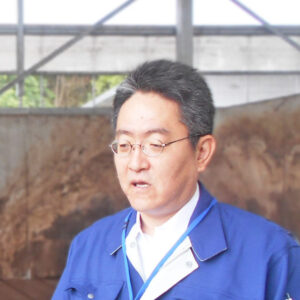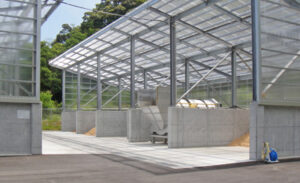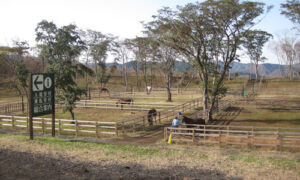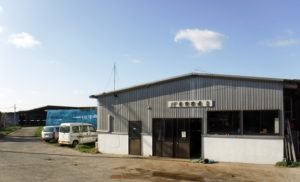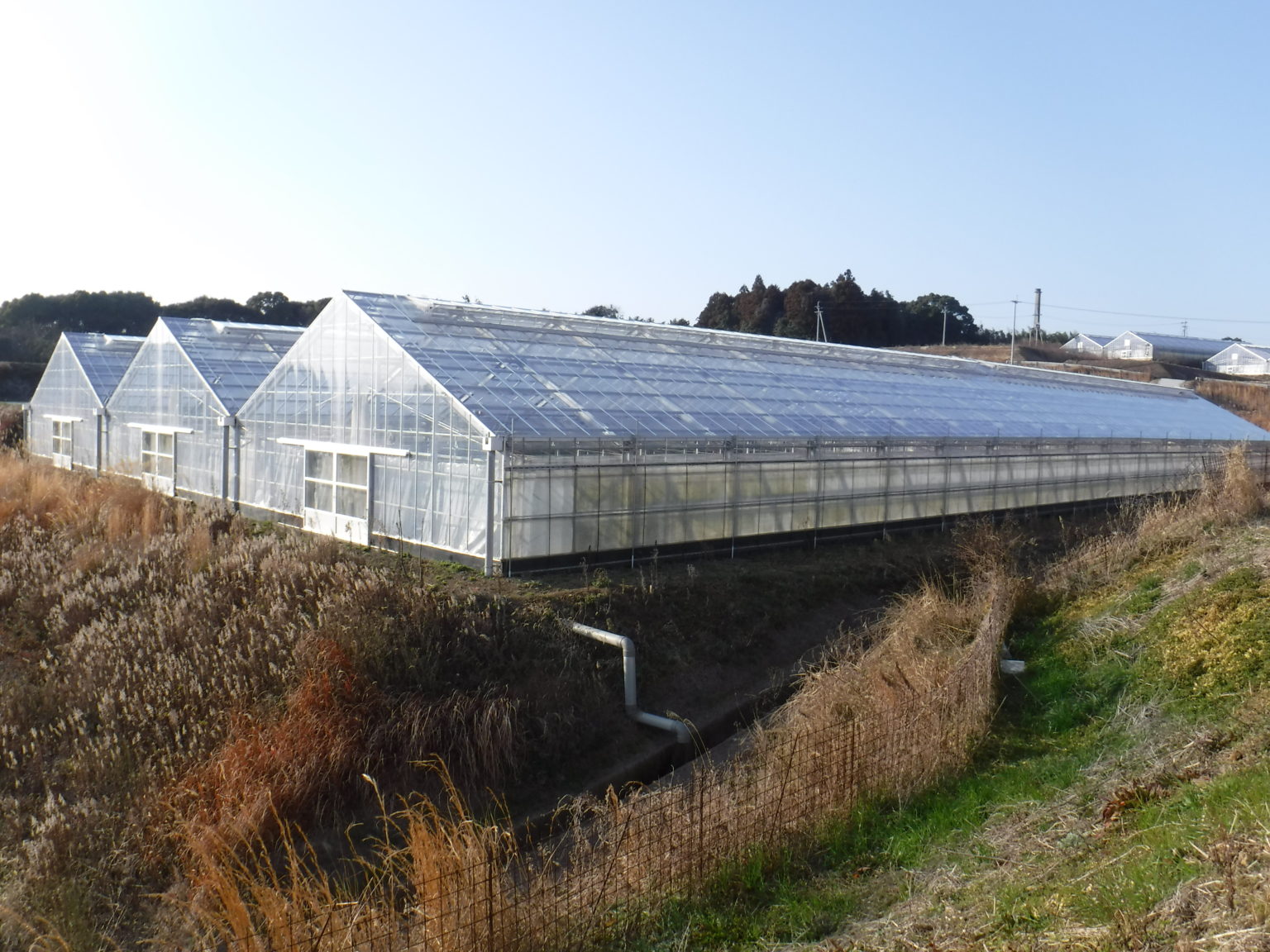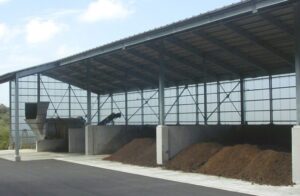Fermentation Even in -30℃ Cold Weather!
Hokudo Kaihatsu
Hokudo Kaihatsu's sludge composting was initially a challenge, but the C-Mode and Easy Jet systems resolved the issue of "Can sludge ferment using its own power, eliminating the need for fuel?"

Can Sludge’s Own Power Effectively Process It?
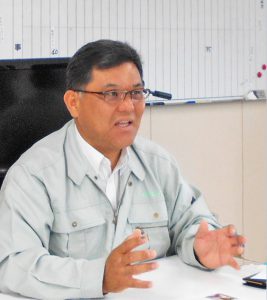
Hokudo Kaihatsu Head of Business Division Mr. Toshihiro Yamada
Initially, our company introduced mechanical drying equipment for sludge treatment and sold the dried fertilizer.
However, the dried fertilizer was dusty and difficult to handle, with uneven nutrients.
The thought that “even though we can handle the processing, if we are producing something that cannot be sold, it is not truly recycling” became stronger.
Moreover, issues such as equipment aging, monthly fuel costs exceeding 10 tons, rising heavy oil prices, and increasing amounts of sludge to be processed each year compelled us to establish a new processing method.
We began considering the idea that “If we could ferment the sludge using its own power, it might be possible to process it without fuel”.
From this thought, a trial-and-error process lasting three years began with the goal of creating compost that could be returned to local fields.
The biggest challenge was the cold. How to stabilize compost production during this time was crucial.
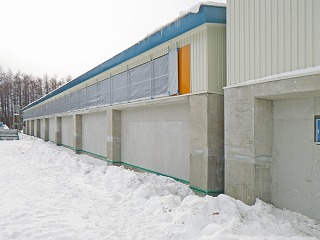
We brought sludge to the composting trial facility and spent days searching for the optimal composting method.
However, in Tokachi, temperatures drop to minus 30℃ from around October, making it extremely difficult to raise fermentation temperatures.
Furthermore, sludge clumped by coagulants could not be mixed evenly with a loader and did not allow air to enter.
Additionally, the sludge that solidified with the coagulant could not be mixed evenly even with a loader, and it did not allow air to penetrate inside.
The composting trials were a series of failures, with issues such as the formation of sludge masses that prevented the fermentation temperature from rising, and the occurrence of mold and unpleasant odors.
It was at this time that we found MIRAIE.
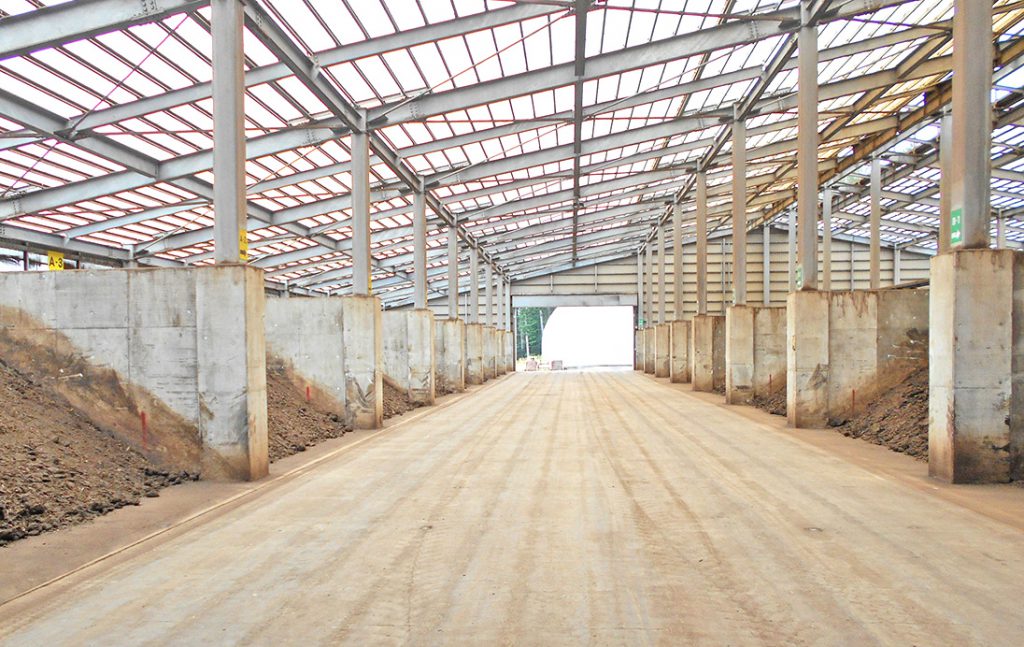
Based on the challenges that emerged from previous trials, we were searching for equipment that could ensure fermentation even in winter.
We also felt that a mixer was necessary to efficiently mix 30-40 tons of sludge and auxiliary materials per day.
We saw MIRAIE’s website and decided to visit the sites where C-Mode (mixing equipment) and Easy Jet were installed.
The facility handled large volumes with a small team, and I had a gut feeling that it could solve our problems.
The deciding factors for adopting C-Mode were that it was a mixer specifically developed for composting and its simple structure.
We discussed composting with MIRAIE, received various pieces of advice, and requested a comprehensive plan for the plant.
We decided to introduce C-Mode and Easy Jet.
Can Such a Small Team Handle Composting?
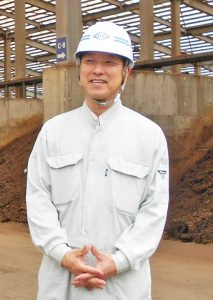
Hokudo Kaihatsu Center Manager Mr. Akio Takei
Visitors who come for inspections are often surprised.
No matter how low the outside temperature is, Easy Jet raises the temperature smoothly, ensuring that composting is completed in 28 days even in mid-winter.
Additionally, since mixing is done well, heavy machinery work is minimized, allowing processing with a small team.
The significant burden of heavy oil costs has been eliminated, and now, with only the electricity cost for Easy Jet and fuel costs for heavy machinery, processing costs have been greatly reduced.
The finished compost is used as a fermentation accelerator by livestock farmers and sold as compost for rotation on fields using trailers.

“I hope MIRAIE will act as a bridge for providing information to industry peers, leading to improvements in composting facilities nationwide.”
We also felt a renewed commitment to improving product quality and composting technology to bring joy to as many customers as possible.
Also, Mr. Yamada and Mr. Takei, who taught us about the deliciousness of Hokkaido vegetables with smiles.
The joy of being able to give back compost to the rich soil could be felt in their expressions.
About Customer

Hokudo Kaihatsu
The company's processing facility, Hokudo Recycle Center (LOOP), located in Memuro Town, Hokkaido, composts the 7,000 to 8,000 tons of dewatered sludge discharged annually from the sugar refinery (Nihon Tenbai Seito) during the six months of winter.
Constructed to recycle by-products from the sugar production process that were previously landfilled, it contributes to the circulation of biomass generated in the area.
Introduction of the Product
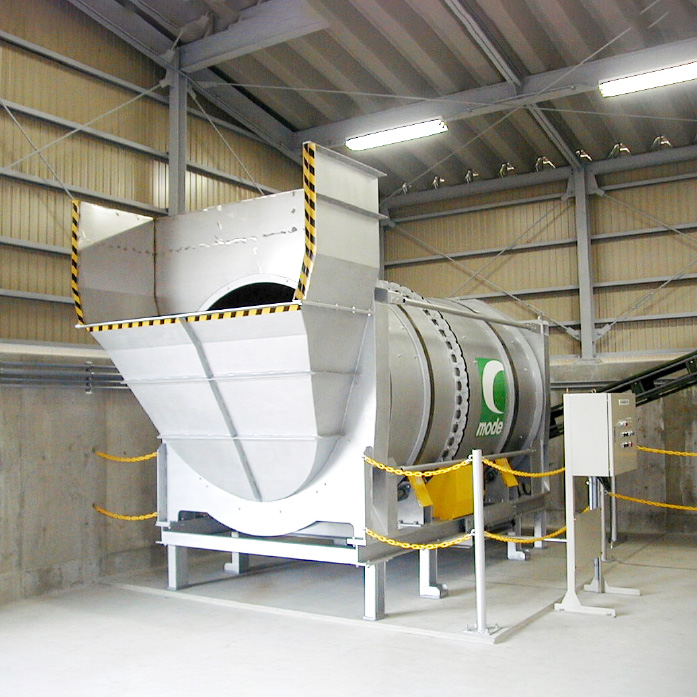
Automatic Mixing Equipment for Compost
C-Mode
Mixing Different Density Materials Quickly
Automating the mixing process, this equipment achieves cost and energy savings. It handles all types of organic materials, uniformly processing different density materials in a short time.
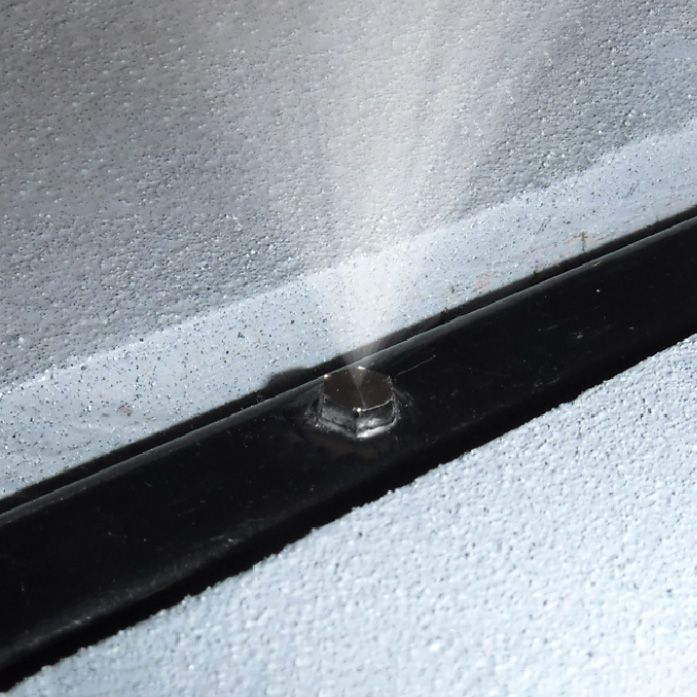
Composting Equipment
Easy Jet
Composting Equipment that requires no turning
A special nozzle supplies oxygen to the inside of the compost, eliminating the need for heavy machinery to turn the compost around. High-temperature fermentation in winter is realized, enabling production of high-quality compost.







 Facebook
Facebook X
X Hatena
Hatena Poket
Poket